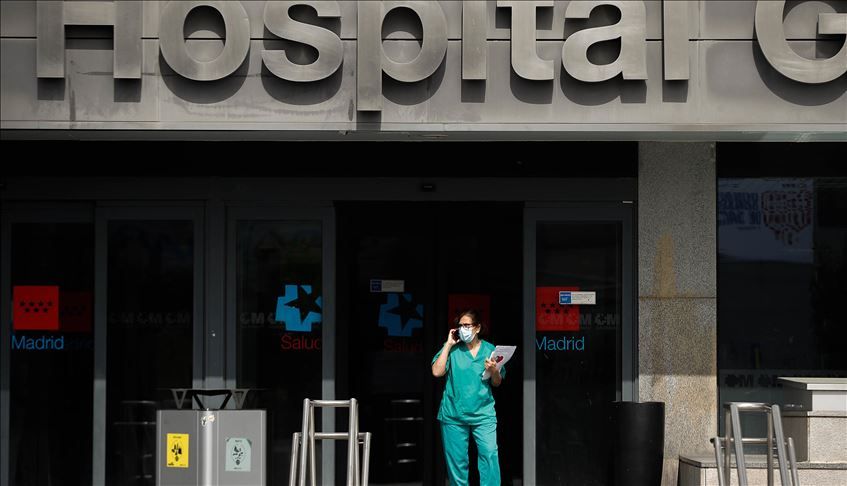西班牙對抗Covid-19: 參考台灣模式
#西班牙,#台灣,#TaiwanCanHelp
David Ferrandiz Mont (莫大偉),為今年從台灣國立陽明大學國際衛生學程畢業之博士,背景為藥學,研究專長領域為社會流行病學以及愛滋病傳染。
由接受採訪專家提供英文翻譯稿(原文加泰隆尼亞文),再經翻譯為中文。以下提供英文翻譯稿,以及中文翻譯稿,對照:
The Taiwanese approach: containing the pandemic without the confinement of the total population
主標題:
台灣模式:控制疫病不用全國禁錮
The island applied technologies and awareness campaigns
次標題:
全台應用科技及宣傳提高人民意識

Despite Taiwan’s proximity to China and the millions of Chinese tourists that every year visit the island, Taiwan managed to keep the number of COVID-19 infections very low. Nowadays, Taiwanese people live a relatively normal life without the confinement of the total population; schools, shops, and restaurants are still open. How could Taiwan achieve such success?
儘管如此接近中國並且之前每年數以百萬的中國籍旅客造訪,台灣管控新冠肺炎的感染數目仍維持在非常低。如今,台灣人民相對仍然享有正常的生活,而不需要全國禁錮。學校、商店,以及餐廳仍開門。台灣如何成功地做到呢?
The Catalan David Ferrandiz Mont, who lived in Taiwan six years where he pursued a Ph.D. in Public Health (National Yang-Ming University), tells us that the key element of the success of Taiwan is the rapid response and the implementation of preventive measures at the very beginning of the Coronavirus epidemic. Furthermore, he highlights that based on Taiwan’s past experience with SARS in 2003, they created well-organized institutions, such as the Central Epidemic Command Center (CECC), to coordinate an effective response to future epidemics. These institutions were activated as soon as on December 31st, WHO announced the first cases of pneumonia of unknown cause in Hubei province.
身為加泰隆尼亞人的David Ferrandiz Mont (中文譯名:莫大偉),其取得公共衛生博士學位(國立陽明大學)並居住在台灣六年之久,告訴我們台灣之所以能夠成功管控疫病的主要關鍵在於能夠迅速的反應新冠肺炎疫情,並且在最早時間實施預防措施。再者,他也點出了過去台灣對抗SARS(2003)的經驗,建置了對應機構組織,如中央疫情指揮中心(Central Epidemic Command Center, CECC),來統籌規畫有效的疫病對應。這些機構以及機制從去年(2019)12月31日起即開始啟動運作,而當時世界衛生組織(WHO)才剛宣布中國湖北省第一個未明病因肺炎的首例案例。
Temperature screening
體溫篩檢
“They started checking the symptoms of passengers coming to Taiwan from China,” the public health professional tells us. They also used temperature scanners at the airport to identify passengers with fever. After a few days, Taiwanese authorities started to check the temperature of the population at the entrance of public buildings and spaces, such as hospitals, offices, schools, and universities. Restaurants began to provide alcohol to disinfect the hands of the clients at the entrance, and in the MRT stations, they displayed useful information about how to clean hands or use facial masks.
「他們開始檢驗從中國到台灣的旅客相關徵狀」,這位公衛衛生專家告訴我們。他們同時也使用體溫測量儀在機場攔截具有高燒徵狀的旅客。幾天過後(12月31日之後),台灣政府單位開始於各公共場所入口及空間,如醫院、辦公室、學校,和大學,進行體溫量測。餐廳開始於門前提供消毒酒精給入門光臨顧客進行手部清潔;而於捷運站,也開始播放相關手部消毒或配戴口罩的有用資訊。
“Technology was crucial to prevent the expansion of the Novel Coronavirus in Taiwan,” David points out. The Government put together data from the National Health Insurance and the National Immigration Agency to identify patients with symptomatology with recent travel history in affected areas. “People at increased risk of being infected were quarantined, and they were monitored; they received calls to check their health status, and their movements were monitored using smart-phone GPS tracking. “Those that violate the home quarantine could face a fine of 30,000 euros”, David says.
「科技扮演了台灣防止新冠肺炎病毒擴散的關鍵角色」,David指出。台灣中央政府將相關單位重要資料進行彙整,希望能夠積極找出具有相關徵狀(全民健康保險資料)以及最近有相關旅遊史(內政部移民署資料)的人。「具有相當風險的人被要求進行隔離,並且予以監控;他們會固定收到電話詢問確認健康狀況,而他們的移動會透過給予的智慧型手機進行GPS的定位與追蹤」,David補充,「如果有人違反居家隔離將被處罰可高達30,000歐元的罰金」。
Face masks distribution
口罩發放
Like Spain, Taiwan suffered from face masks shortage. However, the Taiwanese Government took rapid action to solve this problem; they increased mask production and started a mask-rationing campaign. People were allowed to purchase two masks per week.
像在西班牙,台灣同樣也為口罩的短缺煩惱。然而,台灣政府採取迅速的行動來解決這一個問題;他們增加國內口罩的自給擴大生產,並且制定口罩發放計畫;人民可以每七天購買得兩片口罩(更新:現為七天三片)。
These timely actions helped Taiwan to control the spread of coronavirus infection, while in Spain, the epidemic is out of control. Therefore, can the Taiwanese model to handle this pandemic be implemented in Spain? Or is it too late? David Ferrandiz insists that we still can learn a great deal about it, particularly when it comes to using technologies to fight this pandemic, and from Taiwanese education and awareness campaigns. “Taiwanese government not only educated people about how to clean hands and other hygiene practices but also provided useful tips to do the grocery shopping safely, for example,” David points out. All these tips could also be very handy for the Spanish population.
這些即時的行動幫助了台灣能夠控制新冠肺炎病毒傳染的散播,而同時,在西班牙感染失控了!因此,是否台灣模式可以運用在西班牙呢?或已經為時太晚?David Ferrandiz堅決認為我們還是可以從台灣經驗學習到許多,特別是使用科技來對抗這場疫病,且台灣的教育還有提升人民意識的宣傳,都可以有所幫助。「台灣政府不只教育人民有關如何進行手部消毒以及其他清潔方法,更提供有用的小技巧,如在進行採買的時候如何保持清潔安全等」,David指出。這所有的小技巧都可以是對我們西班牙人民即時且有用的幫助。
歡迎來訊、建議,或翻譯指教,謝謝。
如有相關問題希望能夠與作者交流,也可於底下回應留言。
